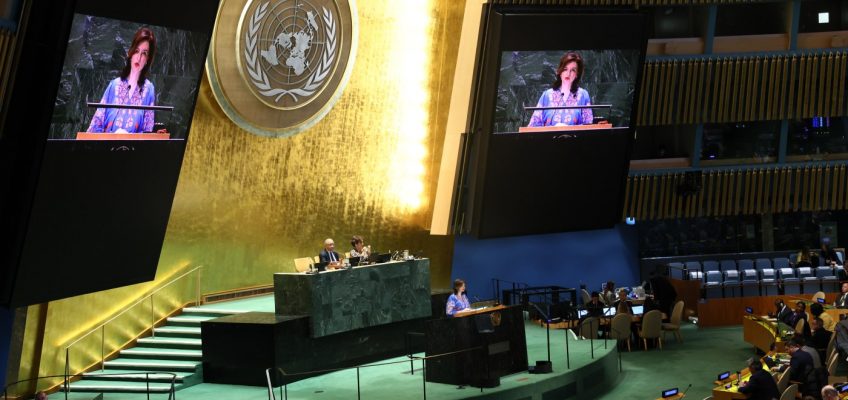ATLANTA — Alton Brown is in his sun-filled Atlanta kitchen on a Monday morning, prepping biscuits inspired by his grandmother, and asks Siri to set the timer for 20 minutes.
“I’ve set the timer for 10 minutes,” Siri replies in a male British accent.
Brown grimaces. “Twenty minutes! Shut up!” Brown yells, exasperated. “Cancel!” He tries again and this time, Siri complies.
“The British accent makes yelling at it so much more civil and satisfying,” he says with characteristic dry wit.
Brown, 62, has embraced his professorial look with a preference for button-down vests, tweed suits and silk neckerchiefs. He has carefully crafted his public mad scientist persona over the past quarter century while imparting culinary knowledge to the masses. He created the groundbreaking edutainment show “Good Eats,” added tasty commentary on “Iron Chef America” and then hosted his sadistically sardonic sabotage-packed game show “Cutthroat Kitchen” where he said he played a “Darth Vader” version of himself.
But since the Food Network ended his revived “Good Eats Reloaded” in 2021, and a reboot of “Iron Chef America” on Netflix in 2022 failed to get a second season, Brown has been focusing on non-TV pursuits.
“I got the last swallow of cable television,” said Brown, referencing cable’s heyday in the 2000s and early 2010s before streaming consumed its essence. “The model for what we know as content has changed. Netflix and Amazon have these algorithms. They’re fine. I just don’t think it’s very organic. I haven’t really enjoyed working within these venues. It’s not natural for me.”
On tour
Brown has released his first book of essays, “Food for Thought” (Gallery Books), and is launching his fourth and final incarnation of his live culinary variety show, “Last Bite.”
For the uninitiated, the 60-plus city tour features a goulash of wild scientific experiments, cooking demonstrations, food-themed music, audience participation and Brown’s trenchant observations and anecdotes.
On previous tours over the last 12 years, this Renaissance man with a University of Georgia drama degree made chocolate ice cream in 10 seconds using a CO2 fire extinguisher, built a mega Easy Bake Oven with 54 high-powered theater lights to make pizza and dressed as a “Food God” in a sparkly toga, golden spoon crown and oversized whisk scepter to declare the abolition of children menus at restaurants and Sriracha use without a permit. Guitar in hand, he sang facetious songs with titles like “TV Chef” and “Pork Chop Blues.” And for the high-minded, he once displayed flatulent sock puppets.
Brown’s inspirations included a wacky live tour by the “Mythbusters” crew and warm memories of cheesy 1970s variety shows such as “The Sonny & Cher Comedy Hour,” “The Carol Burnett Show” and “The Donny & Marie Show.”
“It allows me utter creative freedom,” Brown said. “Nobody gives me notes. I do what I want.”
The spontaneity of audience members on stage provides Brown a particular thrill. “I remember one show, a grandmom type had been hitting the bar pretty hard and she absolutely wouldn’t keep her hand off my backside like, through the entire demo,” he said. “Once, I accidentally chose two volunteers from different sections of the theater who turned out to be each other’s exes.” (For better or worse, no “Springer”-like fight ensued.)
Lee Marshall, CEO of MagicSpace Entertainment, oversees Brown’s tours and has worked with legendary magician David Copperfield, Michael Flatley of “Lord of the Dance” fame and astrophysicist Neil deGrasse Tyson. He said he normally gets deeply involved with tour production but, in the case of Brown, “I just let Alton be Alton … I take no credit for his insanity. He has an intuition on how to entertain people. He could just sit on a stool for 90 minutes and tell stories and people would be enthralled. He’s a thespian at heart.”
The new tour will be packed with fresh technology including a moving LED screen and an over-the-top contraption he won’t reveal until showtime but that will involve steam and thermodynamics.
Not that Brown is a man full of boastful confidence. He admits to “constant, unrelenting self-doubt.” He never feels fully satisfied by anything he does. “Only the process gives me any satisfaction,” he said. “The second that it’s over, the results are meaningless outside of financial gain.”
His restless insecurity, many have observed, is what fuels him.
Marshall is often on the receiving end of Brown’s said insecurity. “I’m his chief psychologist and trusted adviser,” he said. “He’s on the ledge all the time. It’s what makes him brilliant. He has never not delivered on what he says he does. He’s a man of his word.”
Brown said he is indeed assiduously organized for work projects but his daily life can be a mess. “I typically spend at least an hour a day looking for my keys,” he said. And, yes, he said, “I’m not a great cook. I only learned to cook, really, so that I could tell stories.” At best, he will acknowledge, “I’m an OK cook.”
A new chapter
Brown, who has an adult daughter from his first marriage who is now attending law school, said his life has become immeasurably better following a painful divorce in 2016. That year, he became so impressed with award-winning interior designer Elizabeth Ingram’s work at Atlanta Westside steakhouse Marcel, he hired her to design his post-divorce loft in a converted Marietta textile mill.
That relationship quickly evolved, and they married in 2018. “I duped her into staying with me forever,” he said.
Ingram became entranced by the way Brown’s mind works: “He will devour books on thermodynamics to learn how to cook a hot dog better. And he can regurgitate it to me so I can understand it. It’s an amazing thing to witness. His left and right brains are really well connected.”
She also marvels over his broad appeal when he runs into fans, especially in Manhattan where they have a small apartment. “I have been literally brought to tears by the reverence some people have,” Ingram said. “It could be a woman from behind the counter at MoMA from Lagos, Nigeria, or a hipster with a lip ring in the East Village. People tell him he’s the reason they went to film school.”
Brown, in turn, said Ingram has been a positive influence on his life because “I tend to bring grenades to fistfights.”
“I’ve learned to shut up and listen and to, above all, strive for kindness,” he said. “ I don’t know if that’s extended outward but maybe.”
Brown splits time between his Marietta abode and Ingram’s century-old home in Atlanta, which was her parents’ place for 30 years and is now amid a complete renovation. They plan to move in town permanently once it’s finished. He already shops regularly at Candler Park Market, a “giant bodega” that contrasts sharply with grocery stores, which he abhors. (“I get weepy seeing what people buy.”)
“I’m a loner yet I feel a need for community,” he said. “Candler Park Market is where I can feel that connectivity, that sense of belonging.”
Alton Brown, 62, cuts chanterelle mushrooms to add to scrambled eggs at his newly renovated kitchen in Atlanta that includes a beloved induction range. (Arvin Temkar/The Atlanta Journal-Constitution/TNS)
His in-town home kitchen was fully functional by December, giving Brown the chance to cook breakfast for this reporter. Besides biscuits, which the ever-perfectionist Brown found a tad overcooked, he offered scrambled eggs with local golden chanterelle mushrooms.
“When raw,” he said in his astutely observed style, “they smell a little like apricots.” He also noted that “eggs and mushrooms form one of the great culinary gestalts. And what a lot of people don’t realize is that mushrooms are damn near impossible to overcook … unlike biscuits.”
39 essays
After writing numerous cookbooks, Brown was finally convinced to try his hand at essay writing. Eric Simonoff, his longtime book agent, said they would meet up in New York City and not even talk about food or business. “We’d often talk about poetry or movies or cigars,” he said. “He is a man of multitudes.”
That is very much reflected in his 39 essays. There are stories about his childhood love of Cap’n Crunch, a comical moment involving yeasty bread dough in a hot dumpster, his favorite movie scenes involving food (think metaphors and “Apocalypse Now”), an ode to the kitchen table, the search for the perfect way to create a Thanksgiving turkey, dumb kitchen tools, the magic of chopsticks, terrible ChatGPT recipes and what he learned doing his improvised YouTube cooking show “Quarantine Quitchen” with his wife during the pandemic.
The essays vary in tone and structure, some purely comical, some dead serious. “You have to drop your pants. You have to be willing to expose yourself. That’s not something I had ever done,” he said, adding, “I wrote this essay about being a fat kid, about body image and food. I read it to Elizabeth and I was sobbing. I was wrecked!”
Tom Straw, a friend of Brown’s and author of the spy novel “The Accidental Joe: The Top-Secret Life of a Celebrity Chef,” got an early read of Brown’s book and was impressed by his depth as a writer. He also was surprised by Brown’s essay in which he described how difficult it was in the early going to get the hang of hosting “Iron Chef America” more than two decades ago.
“He made it look easy,” Straw said. “Who knew?”
In the book, Brown drew his own doodles and wrote the entire first draft on a 60-year-old Hermes 3000 manual typewriter because he enjoys the clickety-clack feel of being in a “Mad Men” episode.
“My parents bought a radio station in Cleveland, [Georgia],” he said. “My mom would type up the radio logs on paper… That sound was huge for me. And you can see the physicality of the strikes on the paper. You know where you were when you did it. Did you type with gusto? Did you back up and x something out? My penmanship is terrible, but I can type like a beast!”
If readers like this book, Brown is open to writing more essays. “As I bitch and moan as I get closer to the grave, I can finally look at certain aspects of my life I didn’t understand previously and put them in context,” he said. “I’ll know how to dig deeper holes the next time around.”
A deep lover of cocktails (especially martinis), Brown has also taken a self proclaimed “sabbatical” from drinking alcohol: “I don’t plan on doing the whole ‘sober’ thing, but I’m at a point of life where focus and clarity are key, and that’s not something alcohol helps me with.”
Next?
Once the “Last Bite” tour is finished, he is unsure what his next step will be. While a YouTube show would give him creative independence, he said the pressures to pump out content constantly is unappealing. “It’s like a rock skipping across the pond,” he said. “You can never get immersed.”
Regardless of his next professional move, Brown said he has other priorities: “I care most of all about being a good husband and a decent father to my daughter. If those improvements end up extending out into the rest of the world, fantastic.”
Award worthy: Visiting St. Paul’s three James Beard semifinalist restaurants
It’s fish fry time! Here’s your 2025 list of restaurants and organizations with Lenten specials
Recipe: Comedian Stephen Colbert suggests this method for cooking swordfish
Five weeknight dishes: Recipes that are speedy to make, spectacular to eat
Harissa brings complex chili heat to this meaty Libyan soup during Ramadan




